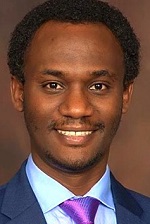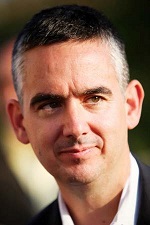The Federal Reserve raised rates by 75 basis points Wednesday, citing robust job gains, low unemployment and inflation.
The Federal Open Market Committee’s unanimous agreement on the increase was on par with economists’ expectations, and followed a 75-bps increase in June that was the largest increase in 30 years. The committee raised its target range for the federal funds rate to 2.25% to 2.50%, and expects it to rise to 3.25% to 3.5% by year’s end.
CUNA Senior Economist Dawit Kebede said the Fed’s 75-bps hike puts the federal funds rate at a neutral 2.25% to 2.50%, but its plan to increase its rates another percentage point by the end of the year also raises the risk of recession.
NAFCU Chief Economist Curt Long said the Fed was responding to “the hottest inflation numbers in 40 years,” but softening in the economy might lead it to raise rates by a smaller amount when it next meets Sept. 20-21.
Mike Fratantoni, chief economist for the Mortgage Bankers Association, said the Fed’s rate hike might keep mortgage rates stable in the 5%-to-5.5% range for the rest of the year.
Michele Raneri, vice president of U.S. research and consulting at TransUnion, said the interest rate hike will translate into slightly higher payments for credit card holders. “With the average consumer credit card balance of about $5,200, today’s interest rate hike for consumers who do not pay off their balances in full will raise minimum monthly payments by less than $4, or about $40 per year.”
In comments during a news conference Wednesday, Fed Chair Jerome Powell said the Fed still expects to raise its target range to 3.25% to 3.5% by year’s end. Those raises will slow economic growth and soften the labor market, but inflation can be tamed without sending the nation into a recession.
“We’re not trying to have a recession, and we don’t think we have to,” Powell said. “The goal is to bring inflation down and have a soft landing.”
Although the Fed could raise rates by another large amount in September if economic conditions warrant, “it may be appropriate to slow the pace of increases,” Powell said.
The federal funds rate started the year at 0.25% and the Fed increased it 25 bps in March and 50 bps in May. The remaining Federal Open Market Committee (FOMC) meetings this year are Sept. 20-21, Nov. 1-2 and Dec. 13-14.
Kebede, the CUNA economist, said the FOMC anticipates more increases in future meetings to bring inflation down to its 2% goal.
 Dawit Kebede
Dawit Kebede
“This indicates that the Fed is committed to bringing price increases under control despite slowing spending and production,” Kebede said. “The war in Ukraine and pandemic-induced supply constraints are two major reasons behind the record inflation rate whose influence on the economy cannot be altered by monetary policy.”
“However, further rate increases and quantitative tightening will be restrictive and affect consumer demand because it raises the cost of borrowing,” he said. “This reduction in consumer demand increases the likelihood of a recession in the next year as it accounts for two-thirds of the economy.”
Long, the NAFCU economist, said he expects the Fed will raise rates 50 bps at its September meeting.
“Looking ahead, the next moves for the Committee will be more dependent on incoming data than this one,” Long said. “Powell said that another big hike is on the table if data supports it, but he also acknowledged that as rates rise, the standard for another 75-basis point hike will be more stringent.”
 Curt Long
Curt Long
Some areas of the economy are already slowing, Long said. “Housing is an obvious area, but real consumer spending also declined as of its most recent reading in May, and unemployment claims have begun to rise modestly.”
Fratantoni said mortgage rates have dropped about half a percentage point in recent weeks, heading closer to 5.5% than June’s 6% rates.
 Mike Fratantoni
Mike Fratantoni
“There is a tug-of-war in market expectations, between the persistently high inflation numbers and resulting rapid Fed hikes, and the increasing risk of a sharp slowdown and possible recession,” Fratantoni said.
“As a result, mortgage rates may have already peaked and could stay between 5% and 5.5% through the remainder of 2022,” he said. “If that were to be the case, potential buyers, who had been scared off by the rate spike, might find their way back to the housing market.”
Comments
Post a Comment
Please no profanity or political comments.